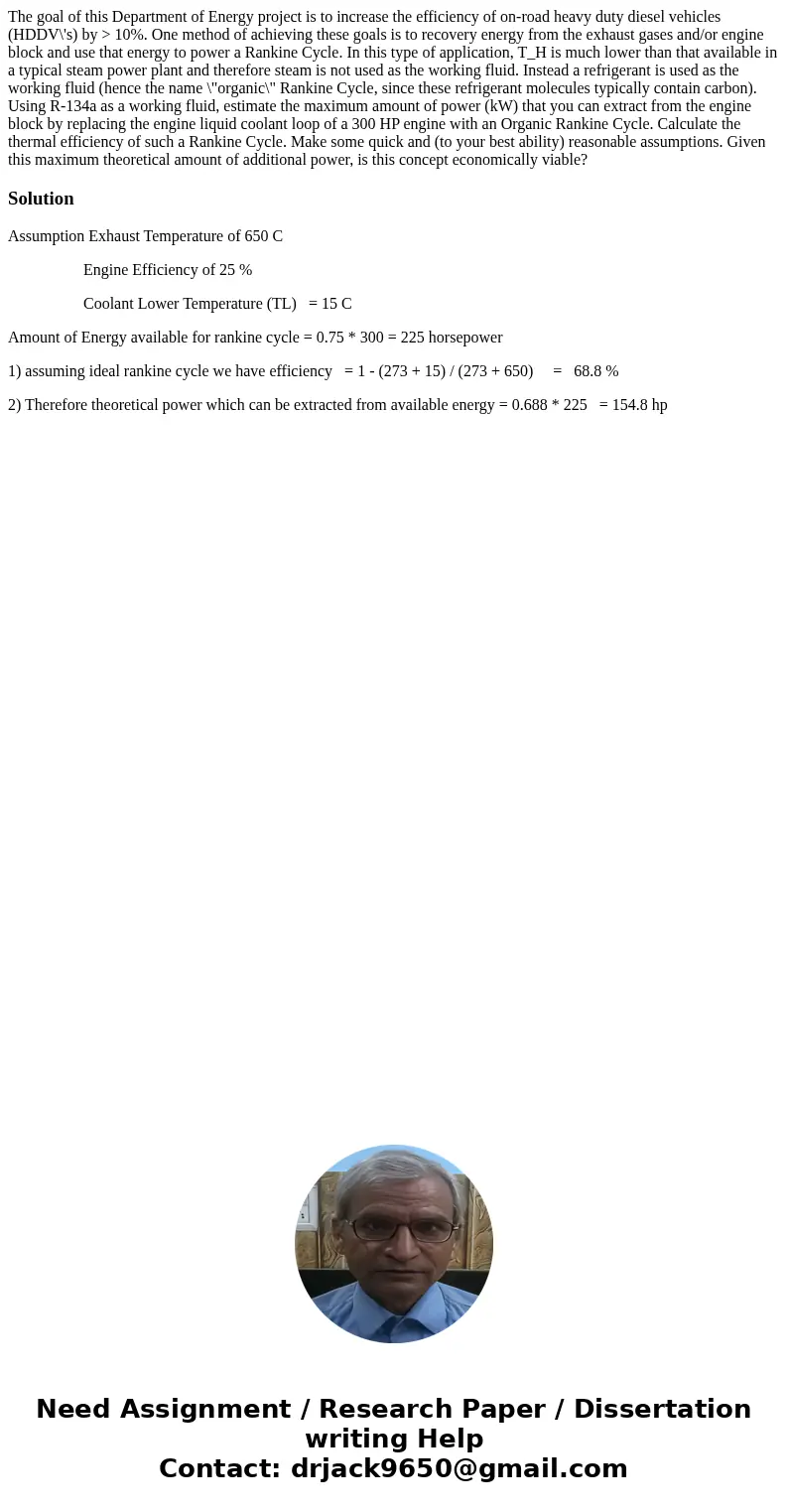The goal of this Department of Energy project is to increase
The goal of this Department of Energy project is to increase the efficiency of on-road heavy duty diesel vehicles (HDDV\'s) by > 10%. One method of achieving these goals is to recovery energy from the exhaust gases and/or engine block and use that energy to power a Rankine Cycle. In this type of application, T_H is much lower than that available in a typical steam power plant and therefore steam is not used as the working fluid. Instead a refrigerant is used as the working fluid (hence the name \"organic\" Rankine Cycle, since these refrigerant molecules typically contain carbon). Using R-134a as a working fluid, estimate the maximum amount of power (kW) that you can extract from the engine block by replacing the engine liquid coolant loop of a 300 HP engine with an Organic Rankine Cycle. Calculate the thermal efficiency of such a Rankine Cycle. Make some quick and (to your best ability) reasonable assumptions. Given this maximum theoretical amount of additional power, is this concept economically viable?
Solution
Assumption Exhaust Temperature of 650 C
Engine Efficiency of 25 %
Coolant Lower Temperature (TL) = 15 C
Amount of Energy available for rankine cycle = 0.75 * 300 = 225 horsepower
1) assuming ideal rankine cycle we have efficiency = 1 - (273 + 15) / (273 + 650) = 68.8 %
2) Therefore theoretical power which can be extracted from available energy = 0.688 * 225 = 154.8 hp

 Homework Sourse
Homework Sourse